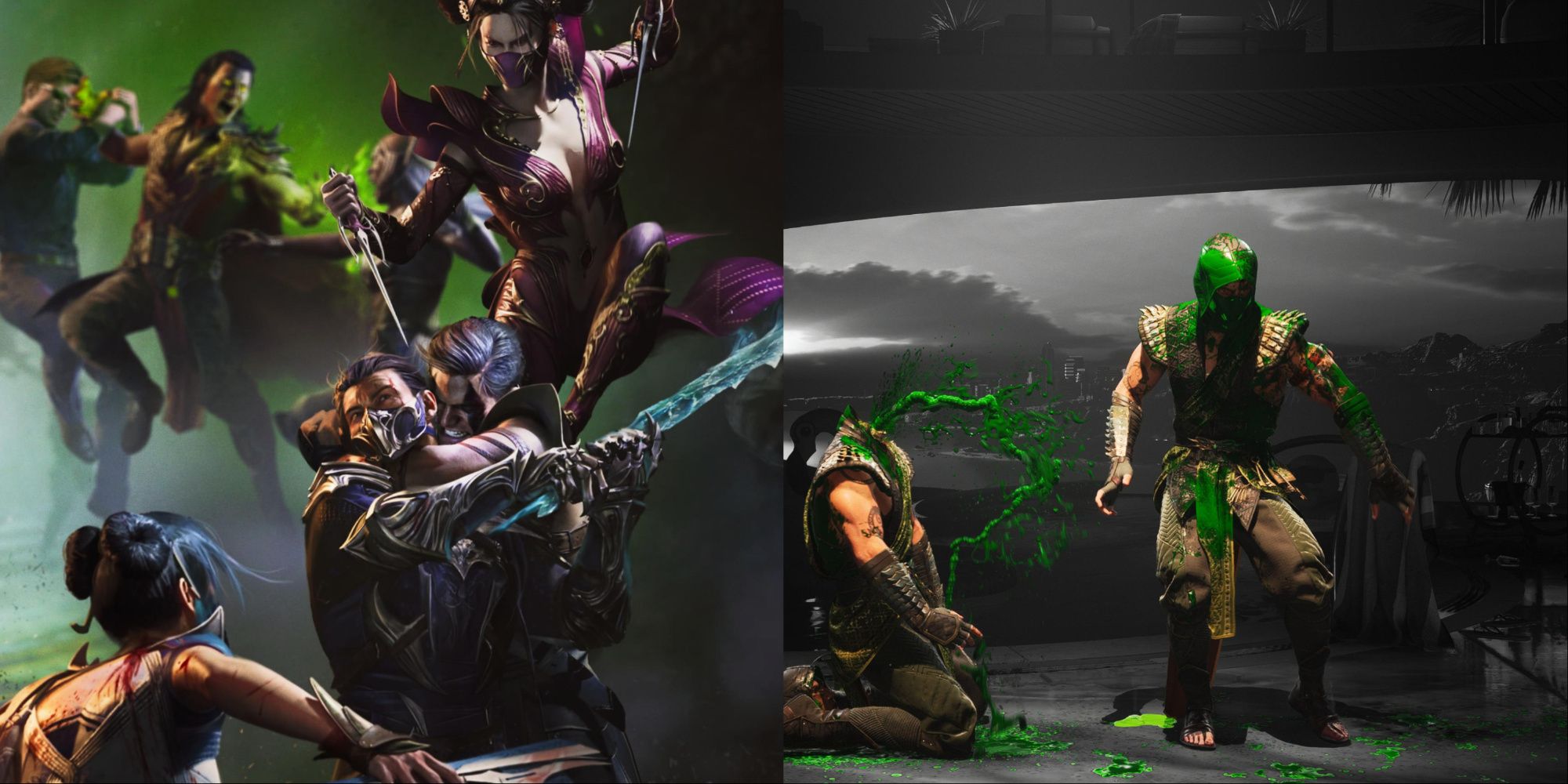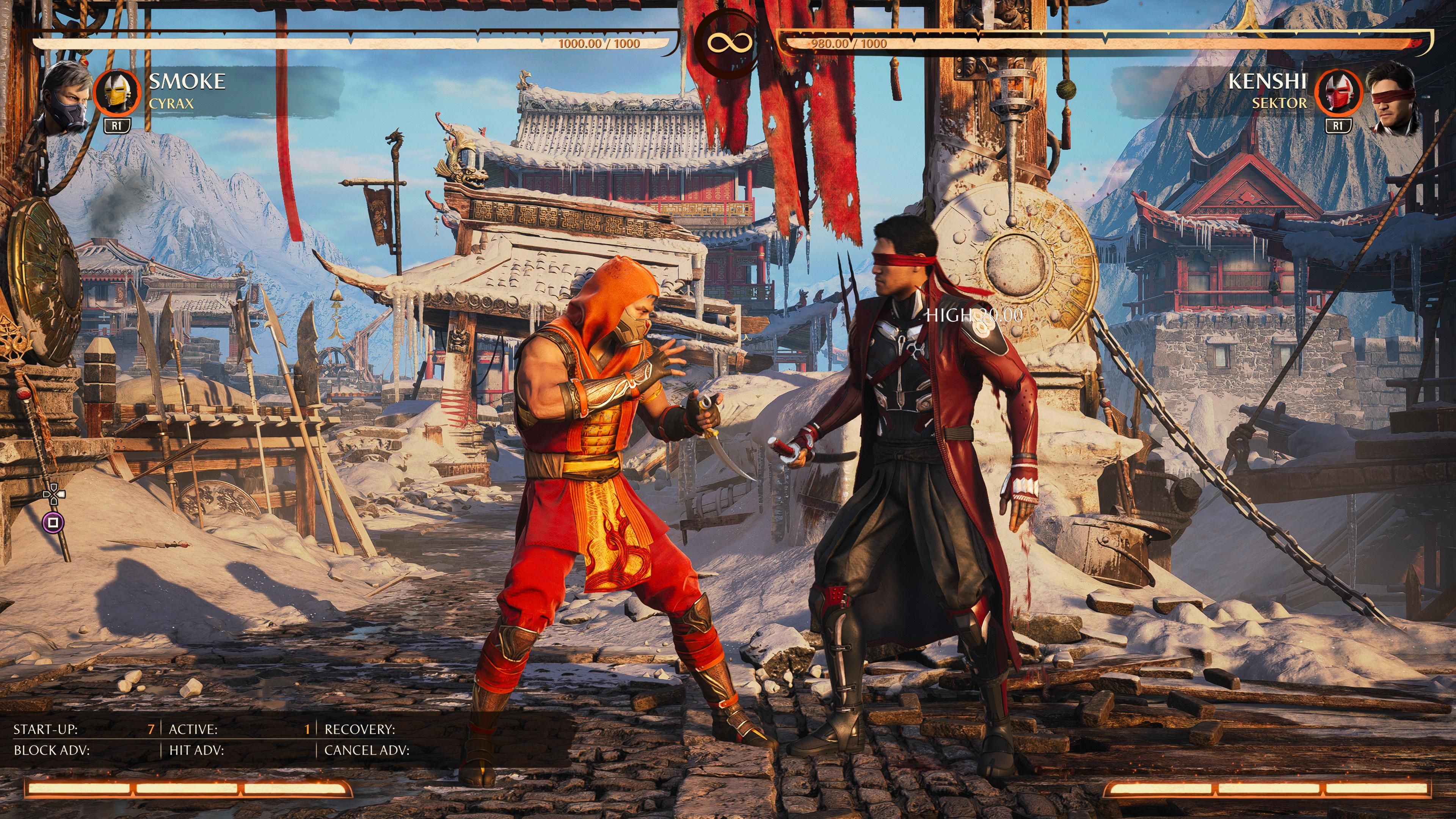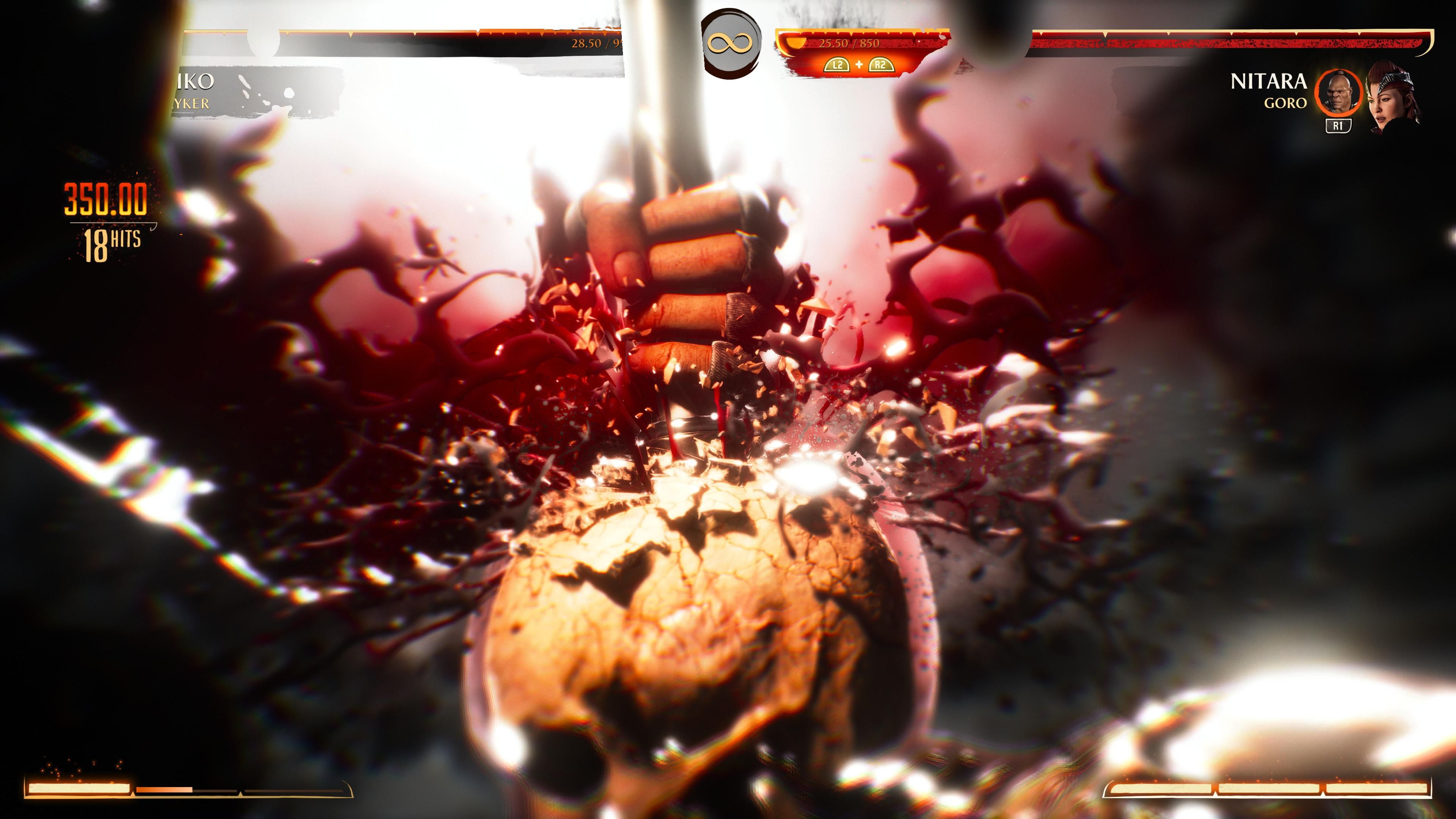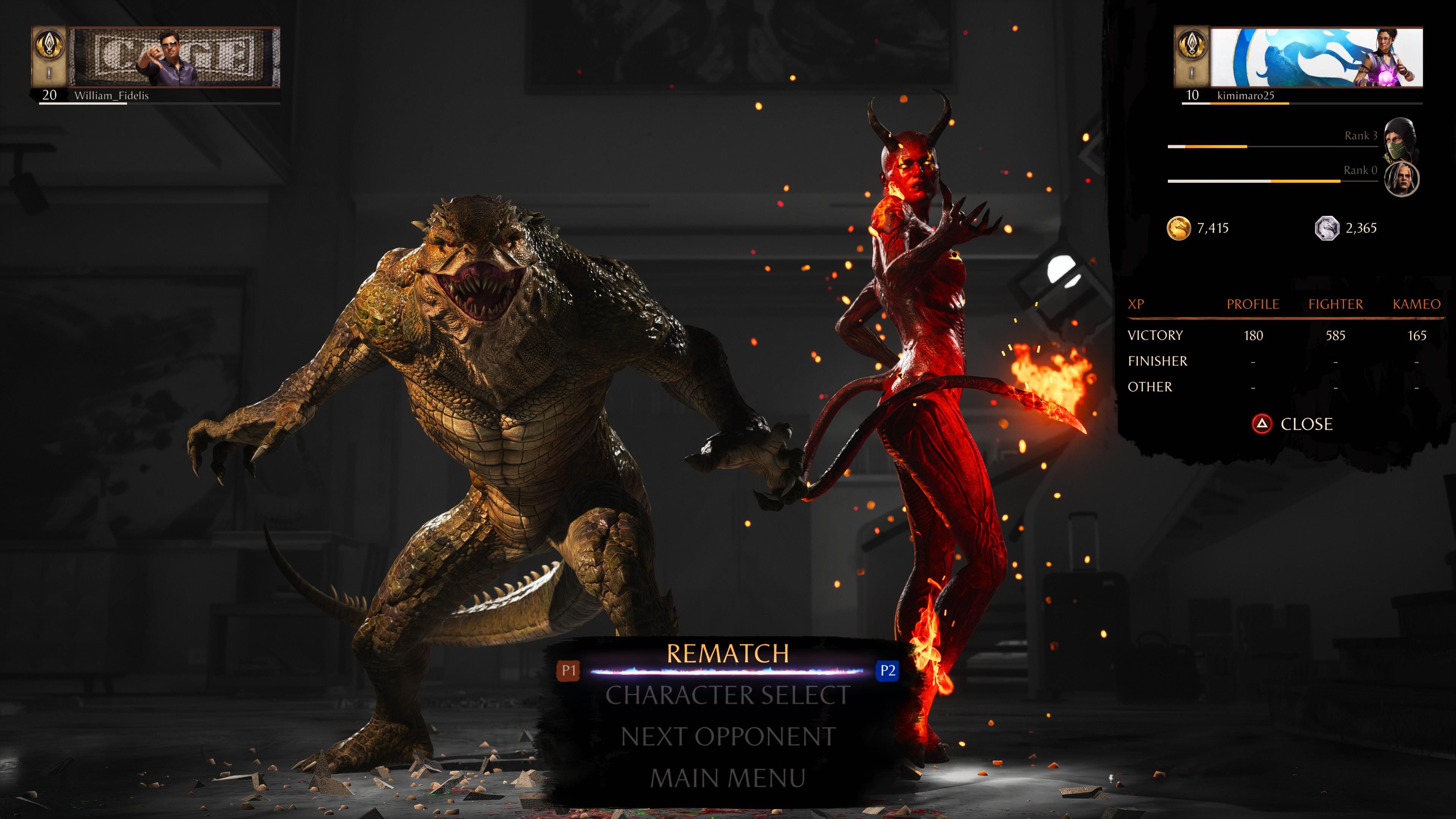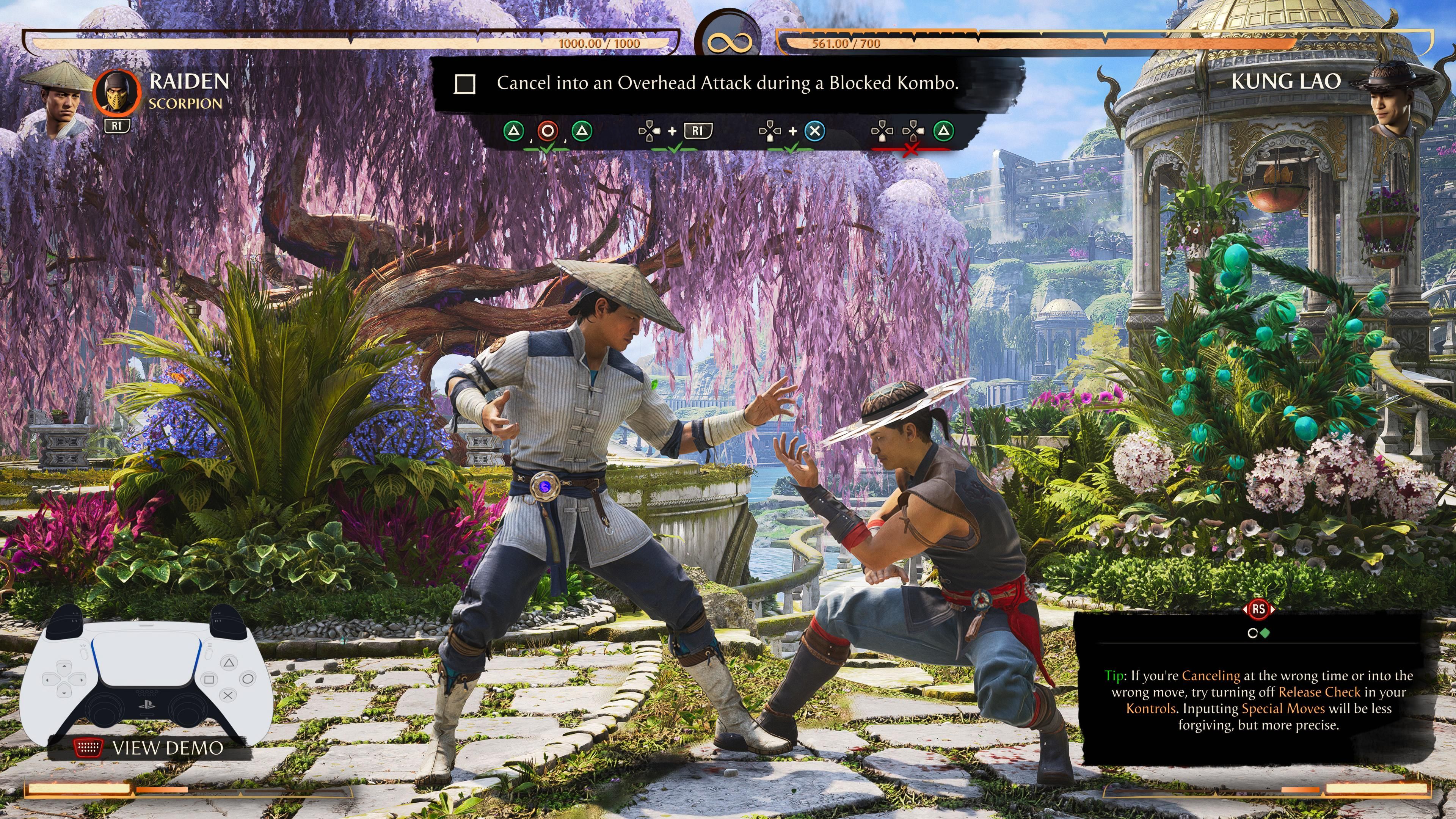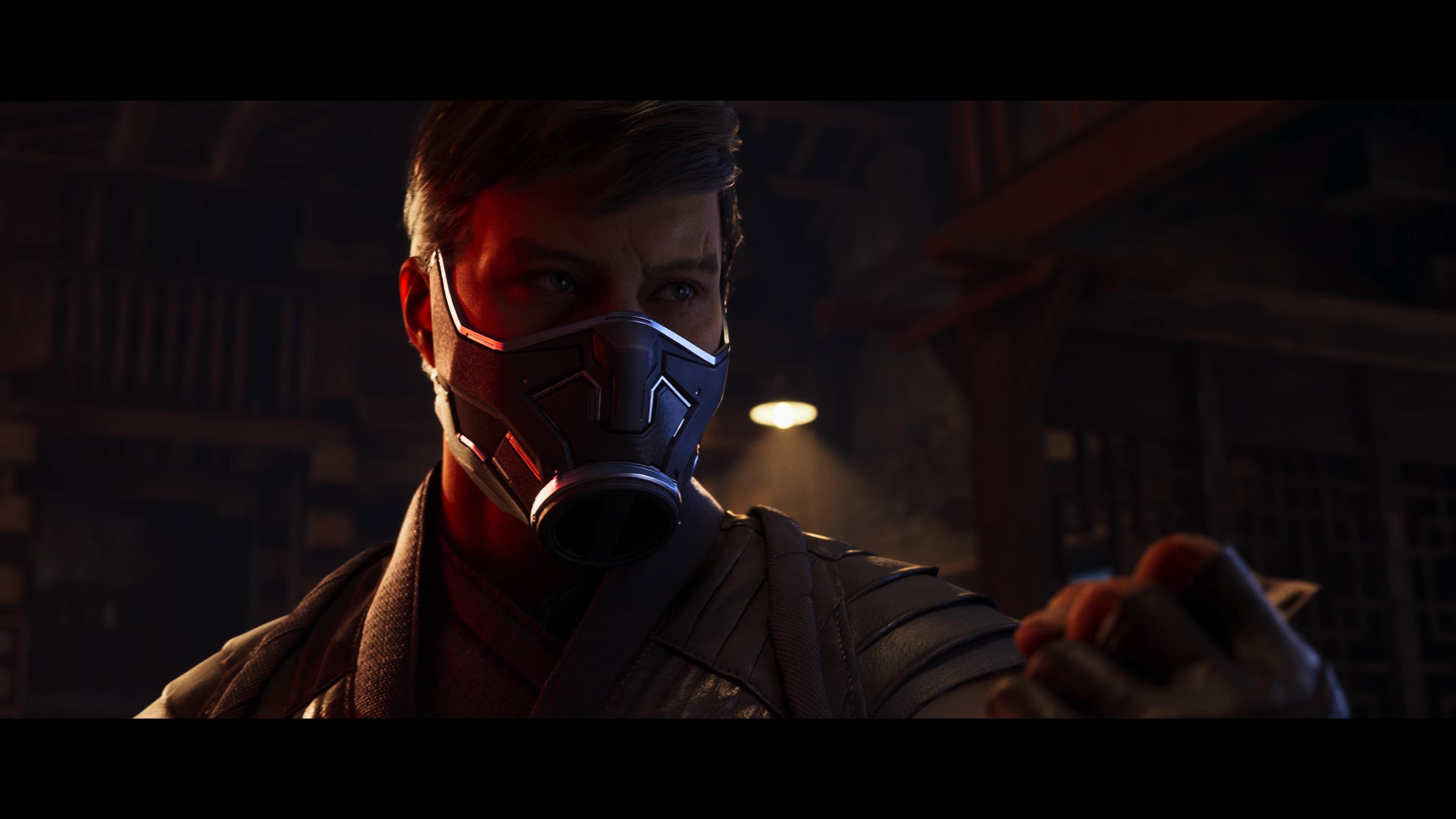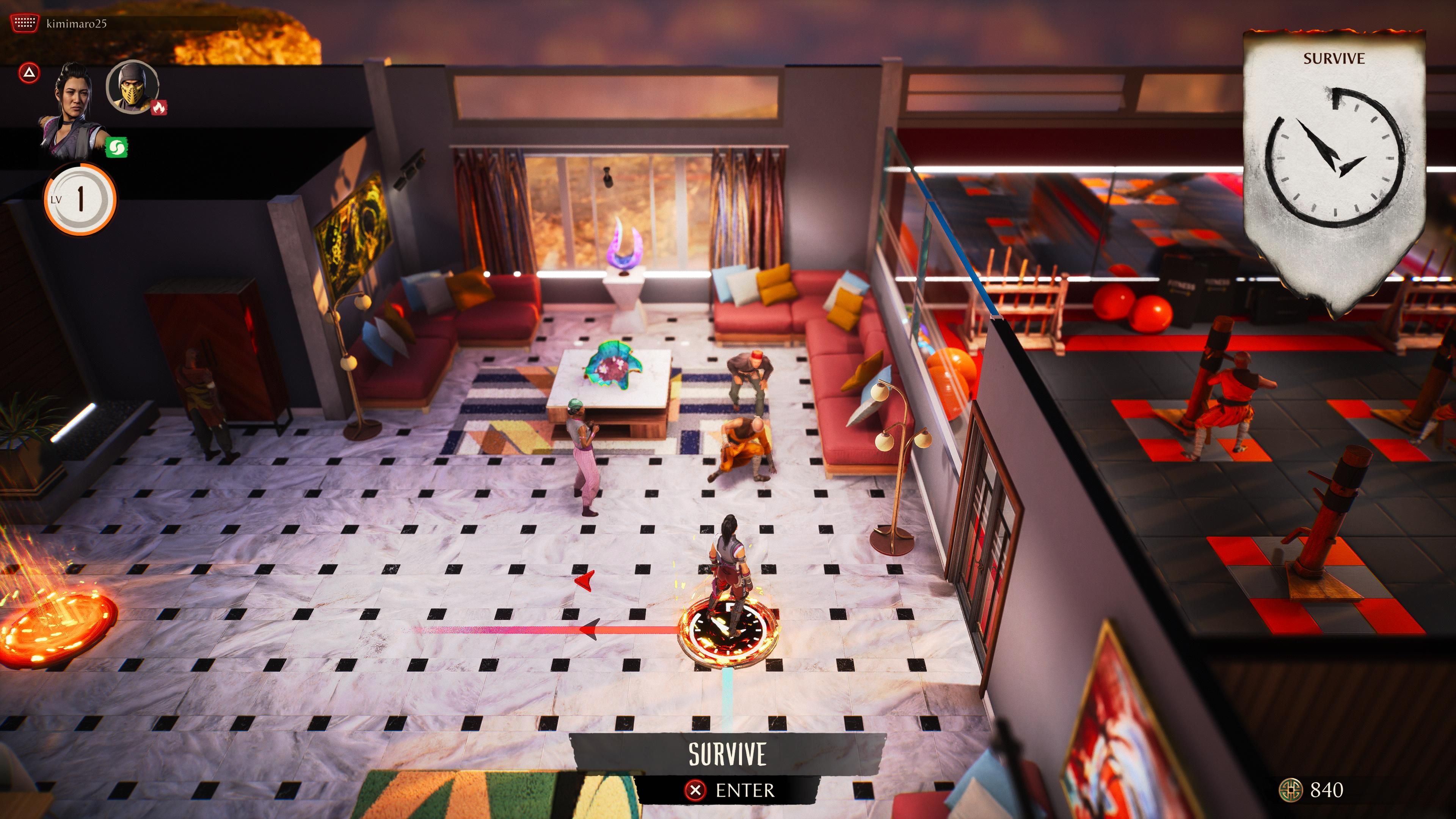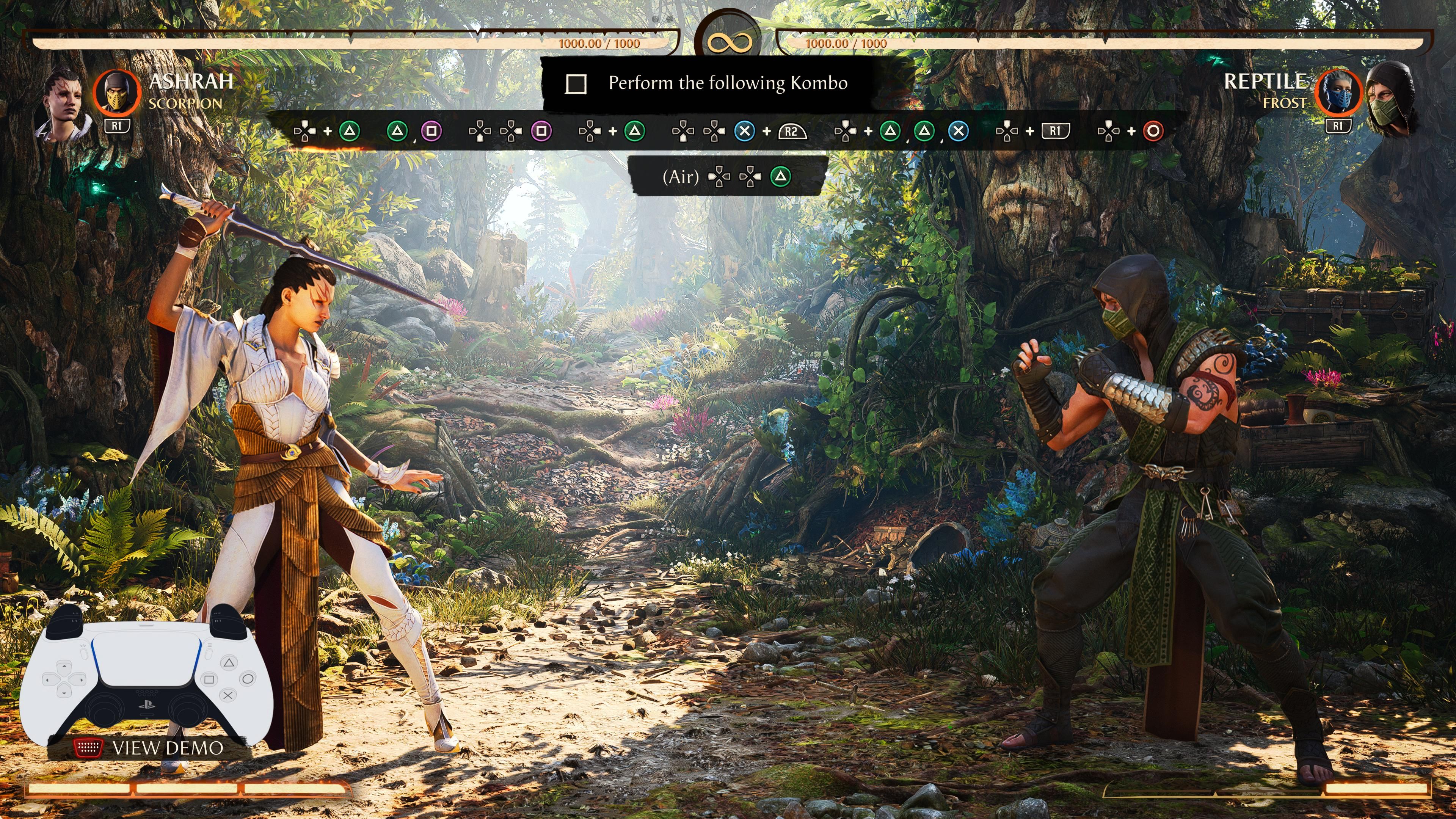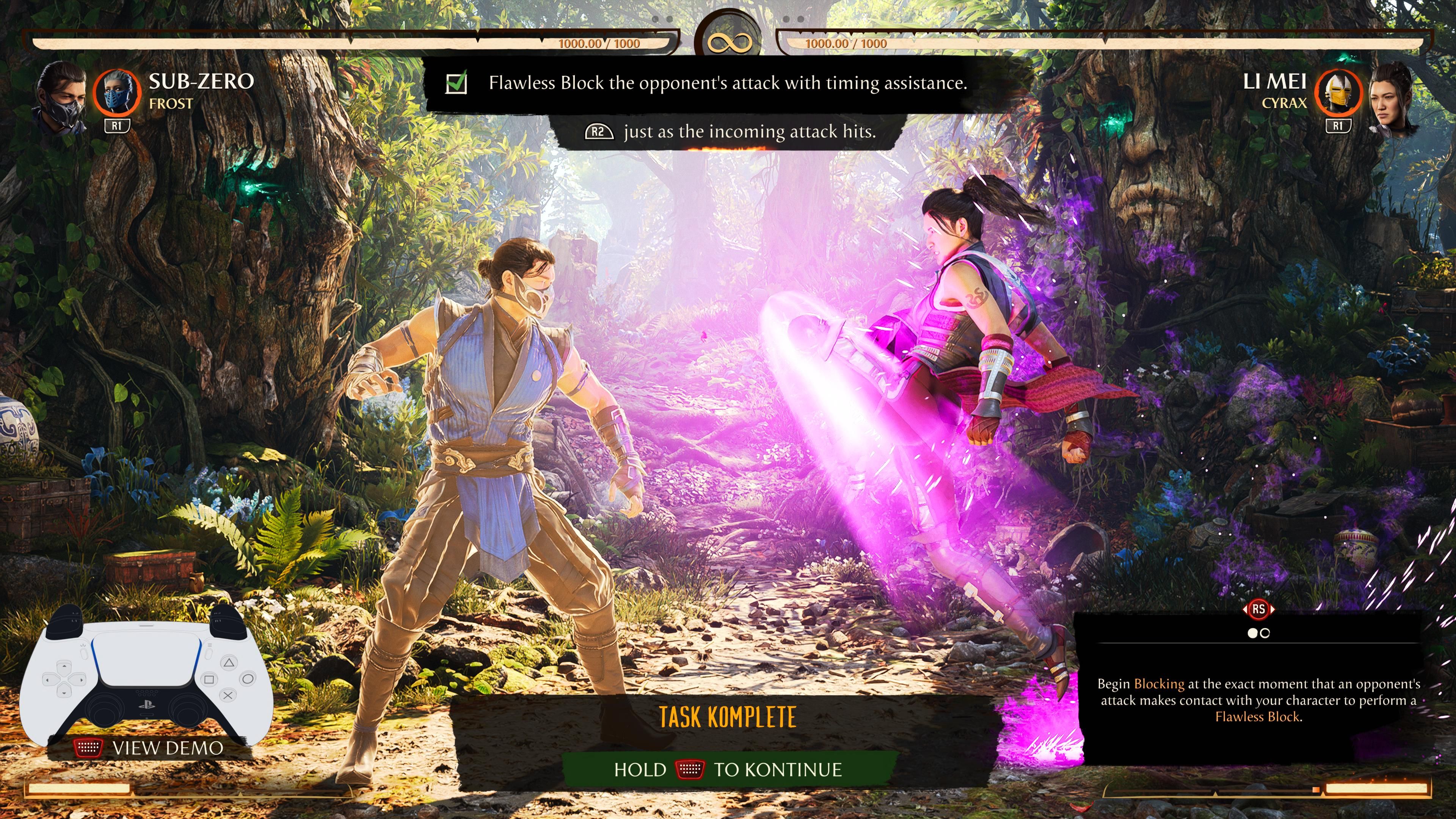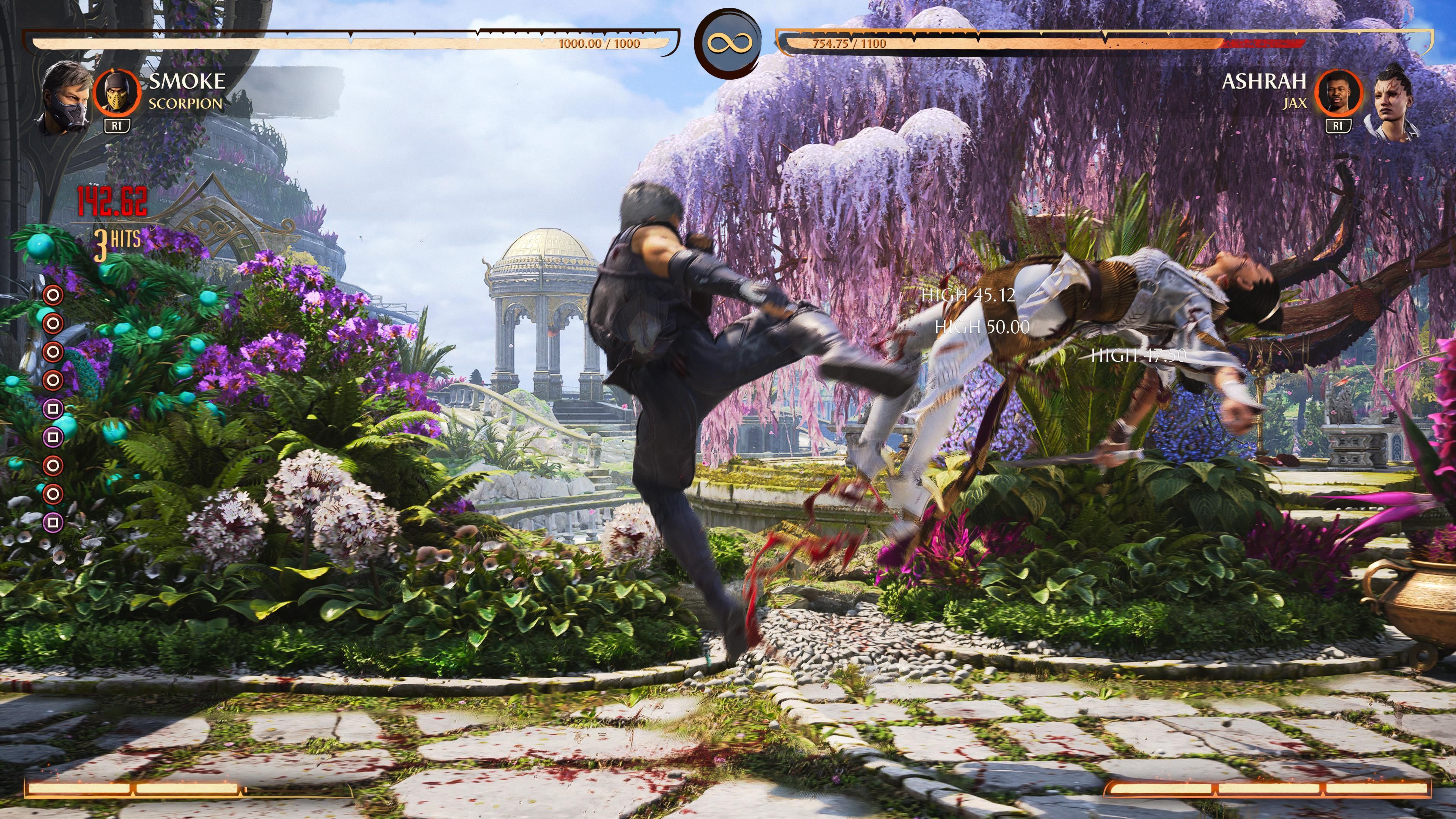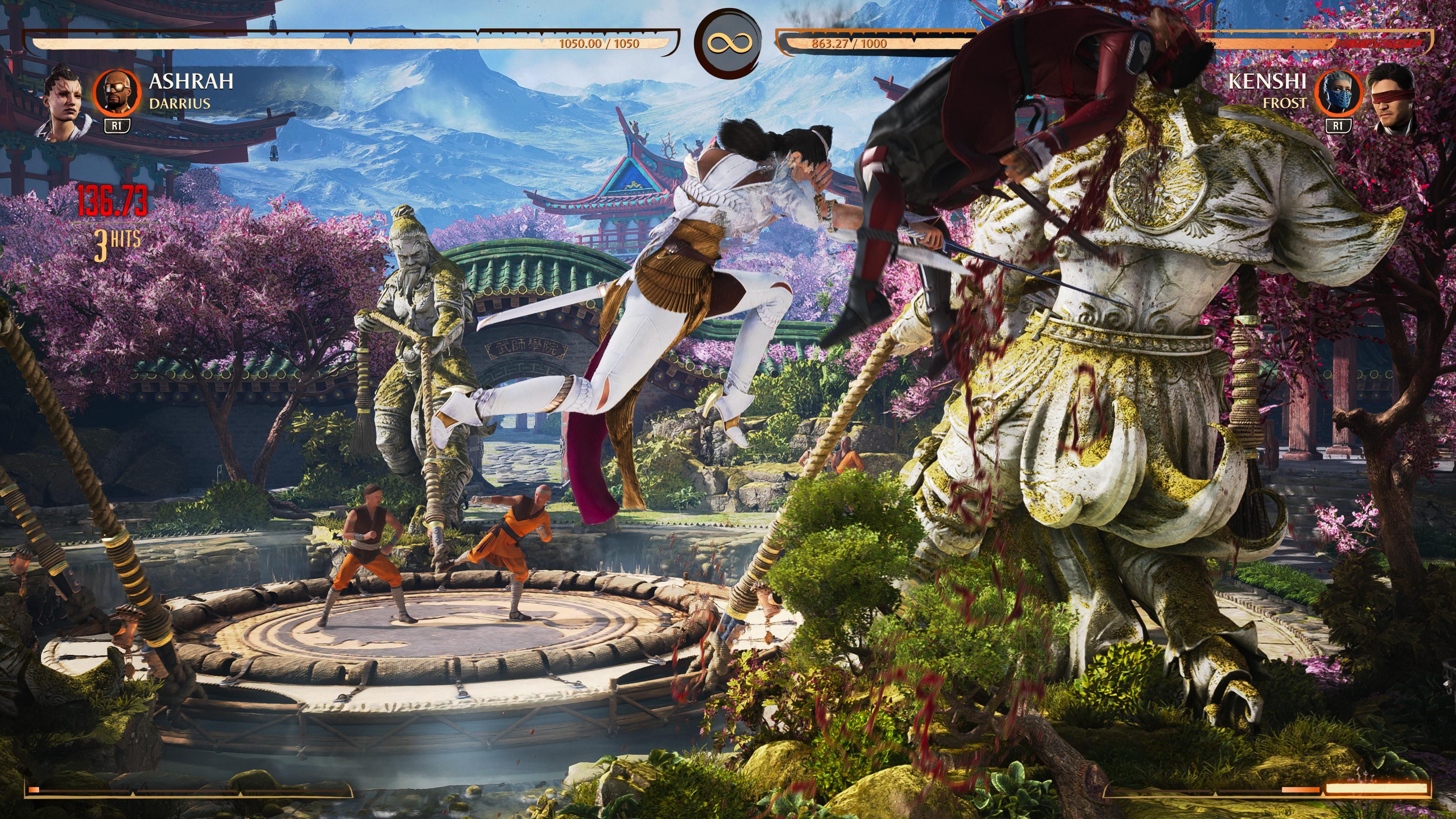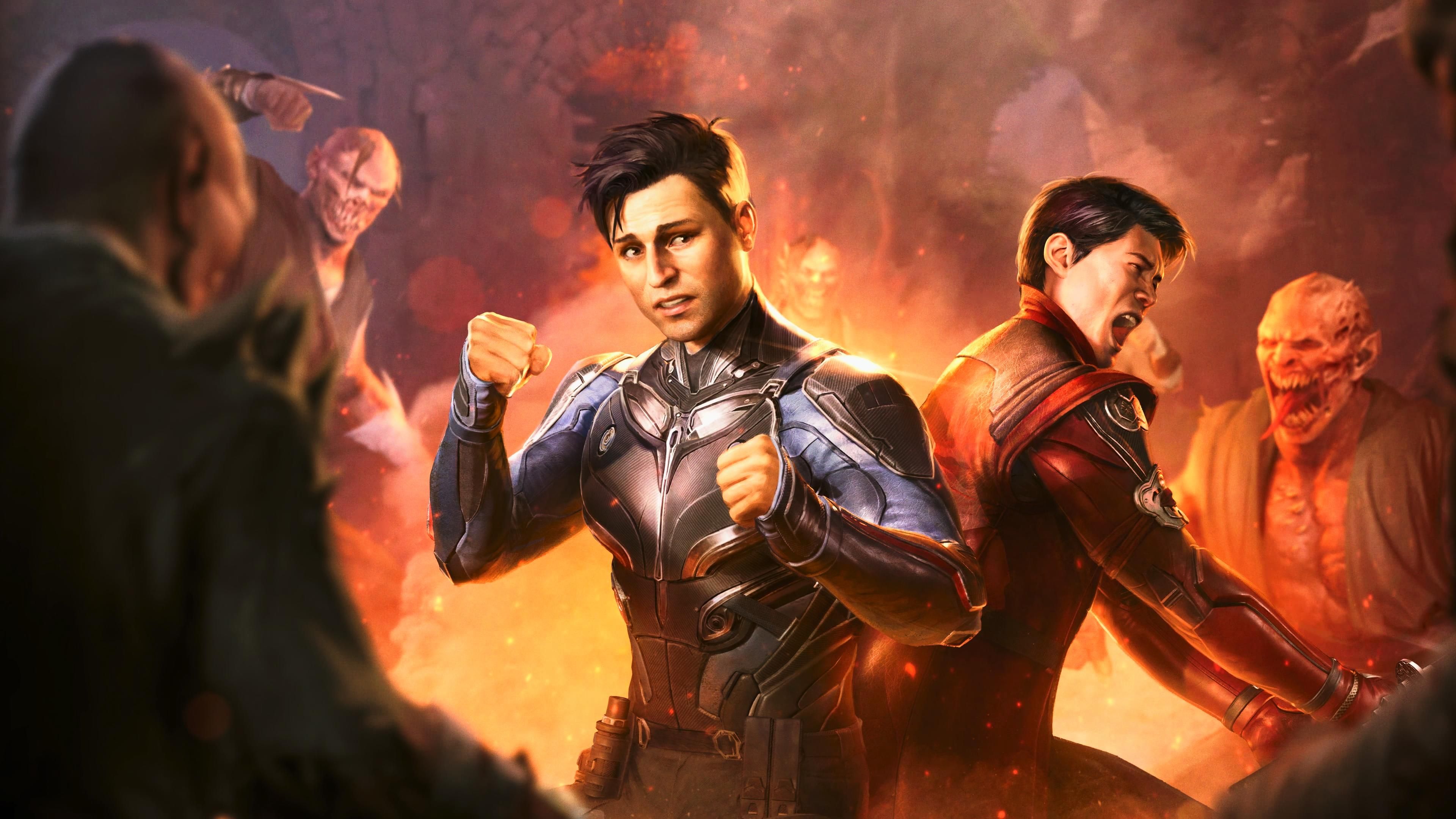You have read this before: learning a fighting game is hard. And it’s true: it usually requires you to learn a ridiculous amount of moves from every character (not only yours, so you can also know what to expect), how to perform them in the most efficient way possible, and how the game’s systems work.
Mortal Kombat 1 fills these boxes like most other titles in the genre. However, the series has always been considerably easier in some aspects when compared to other big names, such as Street Fighter and Tekken. In this guide, we’ll tell you what you need to know when you’re making your first steps in the game.
Updated on September 23, 2023, by Axel Bosso: As we keep playing and learning more about Mortal Kombat 1, we have added one more lengthy tip to keep helping you learn the ropes of this fighting game.
How To Learn Frame Data
Okay, this is the least friendly tip from the whole list, and you shouldn’t really keep it in mind if you’re only going to play this game in, let’s say, a “pretty casual way.” If that’s the case, you can skip this tip entirely. If not, let’s learn more about a key term in fighting games: Frame Data.
What is Frame Data? In a few words, this is the maths of fighting games. You see, usually, each movement you perform with your character can be described in three parts: a beginning (called Start-Up Frames), a middle (Active Frames), and the end (Recovery Frames). In a move, this would be the beginning of the attack, the part where the attack actually hits, and the time your character needs to wait before doing the next attack.
Frame Data is a universal term in fighting games. What you learn about it in Mortal Kombat 1, you can apply to most other fighting games.
We can go quite in-depth with this, but to keep it as friendly as possible, let’s just use the Start-Up Frames for now. Think of frames as a measure of time. When you start an attack, it will have an X number of Start-Up Frames. That means those are the frames that it will take for the movement animation to actually start.
When playing fighting games in a more competitive way, one thing you want to do is learn which moves have the quickest Start-Up Frames in your character’s repertoire. The reason behind this is that you can use these moves to attack before some of your enemy’s moves. For example, if your opponent performs a move that has ten Start-Up Frames and you perform one with seven frames at the same time, you’ll negate the enemy’s animation and strike.
This can be expanded in its own guide, but this is the very basic thing that you need to learn when you think of Frame Data. It is altered, logically, for a myriad of factors, like if you are using attacks that can be canceled, hits with armor, if your opponent is blocking, or other situations. But this is the foundation that you need to know before you can start learning more about this system.
You can check the complete Frame Data of your attacks by doing two things: going to the Move List in the pause menu and checking the Advanced View, or by playing Practice and enabling the Frame Data toggle.
When To Fatal Blow
Sure, using your Fatal Blow as soon as it’s available is tempting. You get to deal a lot of damage while also watching both of your characters crudely massacre your rival with outlandish moves. But using this move without much thought is dangerous because it can leave you free to counter-attacks.
Never perform a Fatal Blow without a strategy. The safest bet is to learn a short and easy combo that connects with your Fatal Blow or leaves your opponent in a stun state, free for your follow-up.
If you’re feeling more confident, you can also use it to react to the other player’s attacks as most Fatal Blow have armor (meaning that they ignore the rival’s move). It can be used on wake-up (when your character is about to stand up after being knocked down), too.
Keep in mind that this is risky, as failing to connect a Fatal Blow will leave you exposed. Plus, you can’t activate this move again right away; you need to wait a few seconds for it to be charged.
Picking Up The Right Kameo
You’ll spend most of your time learning the game by discovering which Kameo goes well with your favorite characters. Kameos, the new mechanic, is basically a support character that you can call to make a unique move. Every Kameo has different moves, and learning which one synergies well with your character is a puzzle in itself.
Does your character have good low attacks? If not, choose a Kameo that can do that, making up for your weaknesses. Does your main Fighter have great mobility options? Kameos like Kung Lao, Scorpion, and Motaro can travel you around the scenarios in a few seconds. There are several questions that you should ask yourself, and find out which Kameo could be an answer to them.
Learn When You Can Cancel Into Special Move
Do you like long combos? Of course you do. Many people play (or watch) fighting games just to see their characters attack endlessly. However, having the skills to do this is another story.
One important concept in a lot of titles in the genre, and also in MK 1, is Special Move Cancels. This means that you interrupt your normal attack by using a special move. It helps extend your combos and do more damage without giving your rival a break.
This is all about timing. Each move has its specific window in which you can press the next command and perform your special move, and sometimes that window is pretty unforgiving.
There’s no other trick than to practice your cancels intensely, but here’s one tip to start: you can start pressing your special moves input before the animation of your normal attack ends. Sometimes, even as soon as the first hit strikes.
Give Story Mode A Chance
Maybe you already played the previous MKs and you know that you don’t like their stories. It’s perfectly understandable: sometimes it just feels like a series of ridiculous events that take place randomly.
However, don’t skip Mortal Kombat 1’s story. Not because of its quality, which will be up to you, but because you’ll earn unique pieces of Gear after almost any fight. These are cosmetic items that you won’t be able to earn in another way.
Plus, the Story Mode can be finished quickly by skipping every cutscene.
Finish Invasion Mode As Soon As Possible
Invasion Mode is a brand new way of playing Mortal Kombat. Here you choose your two characters and start moving on a board, like it was Mario Party. Each circle you reach will have a battle, a minigame, or a reward.
You should finish your available board before the current season changes because it will also change which board is available. What’s more, this is a mode in which you will earn Seasonal Kredits, which is a currency that lets you buy unique items in the Seasonal Store.
Plus, it’s the best mode to farm your Profile Level and your Fighter and Kameo Mastery Ranks. To learn more about this, please visit this guide.
Don’t Jump Intro Trials Right Away
In the Tutorial section of the game, you’ll find that every main character has a series of seven trials with combos that you need to perform. In a sense, this is a good way of learning a little more about your Fighter and what you can do with them. However, it can also be a mistake to make this your first stop.
The thing is, there might be a small number of combos for each member of the roster, but they wildly vary in difficulty, and you’ll quickly find trials that are way too hard for your current level. This can be frustrating and make you feel that you’ll never learn how to properly play. But this is another mistake: you’re just trying to do something that requires (at least) dozens of hours of play if you’re new to fighting games.
It’s worth mentioning that the combos available in these modes are never the best combos you can do in the game. Nor the most optimal ones.
Beware Of Blocking Too Much
Mortal Kombat 1 may have defensive options, but don’t let them fool you: this is a game that encourages you to be aggressive.
It could be said that blocking is better than receiving blows into your head, and that’s hardly debatable. But, on the other hand, you should know that each time you block an attack, you’ll get chip damage. This means, you won’t get as much damage as if you hadn’t blocked the attack, but you’ll still get some.
While the amount of damage will look marginal at first, once you find enemies who know how to keep the pressure on you, you’ll start losing significant percentages of HP. It’s best to start thinking offensively from the beginning.
There’s a mechanic called Flawless Block that lets you block while receiving little to no damage from your enemy attacks, while also preventing them from building their Special Meter.
However, this works as a parry (you need to block at the exact moment before the move touches you) and is incredibly difficult for beginners.
Spend Hours In The Lab
Yes, you knew this was coming. If you read pro players or just people who play fighting games in more than a casual way, it’s most likely that you have heard the term “The Lab.” This is another way of calling the Training Mode, and it’s one of the most important features in any fighting game.
Part of learning how to properly play a title in this genre is to learn what your character can do and find out what you can experiment with them in The Lab. Obviously, if you’re new to the genre you’ll have a rough time finding out all the options available by mere practice. You can always check out other players’ guides and have a better understanding of your fighter.
However, that will only work on theory. To properly learn what you have read or watched, you first need to practice it hundreds (or thousands) of times in Training. Only after you can do something without fail against a dummy, you should start trying it with other players.
Beware that you’ll probably forget all your combos and cool moves once you’re fighting a real person in the game. That’s totally normal, and also part of the experience. You need to keep practicing and testing everything in the field until it becomes second nature.
Aerial Kombo Is The Way
Most modern Mortal Kombat entries don’t have a lot of aerial combat. Yes, you have aerial special moves, you can dive kick your way in while in the air, and some characters even have aerial throws. But not much else.
Things are a bit different in MK 1. Here a lot of characters have gained aerial special moves that they didn’t have previously, and also you have Air Kombo Strings (basically, short sequences of attacks that perform a unique move). You can mix them with launchers (moves that send the enemy into the air).
Learning how to fight in the air is a huge deal in this game. Practice your Air Kombo Strings and how to cancel them into special moves and you’ll earn a lot of experience for your battles.
Forget About Kombo Breakers (For Now)
Kombo Breaker is a move that has been introduced in a specific way in the series since Mortal Kombat 9. Basically, when you’re getting hit, you press forward and the Block button. By doing this, your Kameo will appear and stop the enemy’s attack.
Sounds good, right? The problem, however, is that this move costs all your Special Meter. This is useful when you’re playing against high-level players that can take 50 percent of your life or more in a single combo, but it won’t be necessary at all against newcomers like you.
Instead, take advantage of your meter by using enhanced versions of your special moves. Learn more about these versions, as they usually have unique attributes, like giving you armor, changing sides with your opponent, allowing for combo extensions, etc.

